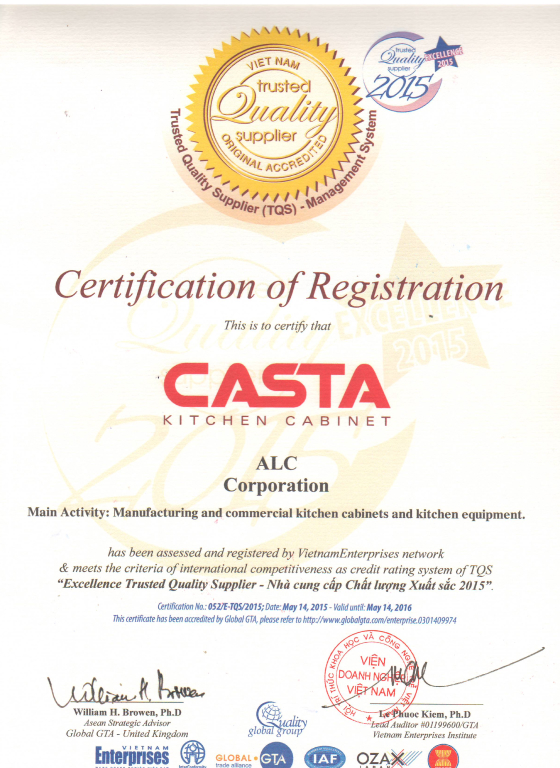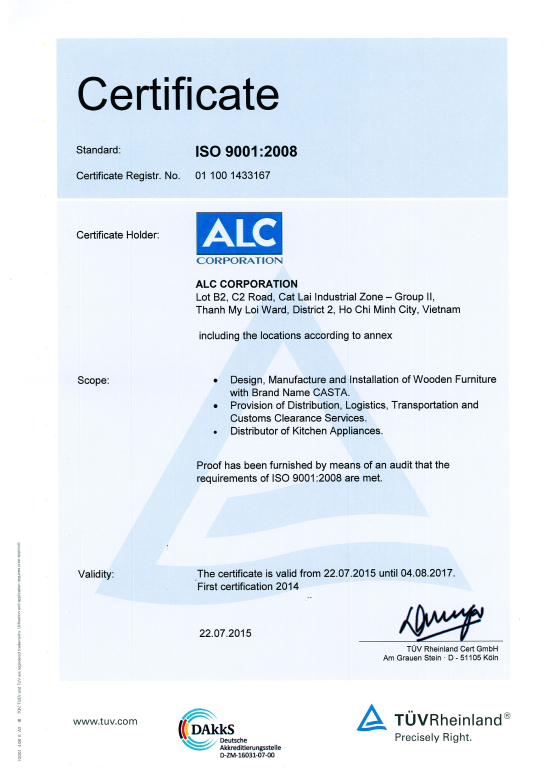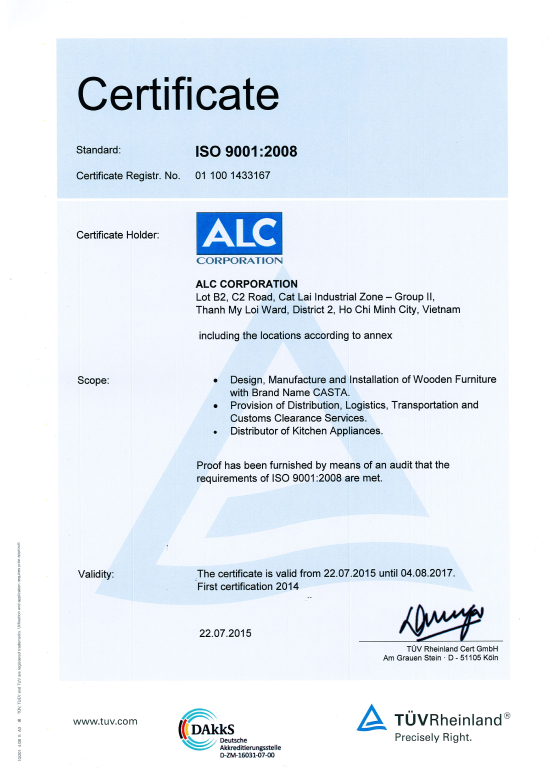ISTA (International Safe Transit Association) package testing standards are a crucial part of ensuring that products can endure the challenges of shipping and handling. These standardized testing protocols simulate the various stress factors that packages may face during transit, such as vibrations, drops, compression, and temperature fluctuations. For industries like furniture and cabinetry, where large and often delicate products are being transported, adhering to ISTA standards is essential to protect product integrity and reduce the risk of damage.
Contractors, cabinet/furniture brands, and companies, particularly those operating in North America, recognize the importance of ISTA standards in maintaining customer satisfaction and minimizing returns. High-end products, especially custom cabinetry, need careful handling throughout the shipping process to arrive in pristine condition. Following ISTA packaging standards not only helps businesses mitigate risks but also reflects a commitment to delivering quality products to customers.
Table of Content
1. What Are ISTA Package Testing Standards?
ISTA package testing standards are globally recognized protocols that outline specific tests to evaluate the durability of packaging during transportation. These standards have been developed to ensure that packages can withstand various environmental and mechanical challenges they may encounter throughout the distribution process. By simulating real-world transportation conditions, ISTA tests help companies optimize their packaging designs and materials to reduce damage rates and enhance the safety of their products during shipping.
The primary goal of ISTA testing is to prevent product damage, particularly for large or fragile items such as cabinetry, ready-to-assemble (RTA) furniture, and electronics. The ISTA standards address specific product categories and packaging needs. For instance, ISTA 1A focuses on basic integrity tests for smaller packages, while ISTA 6A is designed for larger products like furniture and cabinetry. Implementing ISTA standards ensures that products are well-protected and that packaging is efficient, leading to fewer claims, lower returns, and greater customer satisfaction.
Data-Driven Analysis
Companies that adopt ISTA testing experience a reduction in shipping-related damages by 15-30%, leading to fewer returns and replacement costs. This improved packaging also enhances customer satisfaction by ensuring that products arrive in perfect condition, which can translate into repeat business and positive reviews.
Learn more: What are RTA cabinets?

2. Key ISTA Packaging Standards
There are several important ISTA standards that apply to different product types and shipping scenarios. For the furniture and cabinetry industries, the most commonly used standards include ISTA 1A, ISTA 3A, and in certain cases ISTA 3B and ISTA 6B. These standards cover a range of packaging requirements, from basic drop tests to more comprehensive simulations of real-world shipping conditions.
2.1 ISTA 1A: Single Drop Test
This standard is typically used for products that are lightweight and vulnerable to damage, such as small consumer goods or flat-pack furniture. ISTA 1A focuses on testing the strength of the packaging with a single drop from a specified height to ensure the packaging can handle basic shipping scenarios.
- Ideal for: Light items, such as small ready-to-assemble (RTA) furniture or components.
- Test specifics:
- Number of drops: One drop.
- Drop height: Typically between 0.5 to 1 meter, depending on the product and industry regulations.
- Contact surface: Hard surfaces like concrete or wood.
- Drop positions: The product is dropped on one corner, edge, or surface, depending on real-world conditions.
- Expected outcome: Packaging should not be significantly deformed, and the product inside should remain undamaged.
2.2 ISTA 3A: Multiple Drop Test
ISTA 3A is used for higher-value items that may go through multiple handling stages during shipping. This standard tests the packaging’s durability through three drops at various angles and heights, simulating the shipping process where products are transferred between warehouses, trucks, or different operators.
- Ideal for: Items like flat-pack bathroom vanity cabinets or other RTA products commonly shipped through e-commerce.
- Test specifics:
- Number of drops: Three drops.
- Drop height: Between 1 to 1.5 meters.
- Drop positions: Three corners (each dropped twice), three edges, and six surfaces, each dropped twice.
- Expected outcome: The packaging should only exhibit minor deformation, and the product inside should remain intact.
2.3 ISTA 6A: Large Product Testing for Furniture and Cabinets
For larger and heavier items, like fully assembled cabinets or larger RTA furniture, ISTA 6A is used to ensure the packaging can withstand the challenges of long-distance shipping or multiple handling points.
- Ideal for: Fully assembled bathroom vanities, large RTA cabinets, and oversized products.
- Test specifics:
- Drop height: Typically between 1 and 1.5 meters.
- Drop positions: One corner, three adjacent edges, and six surfaces.
- Number of drops: One drop.
- Expected outcome: The packaging may show slight deformation, but the product inside should remain undamaged and functional.
2.4 ISTA 3B and 6B: Testing for Heavier Packages
For products that exceed the weight limits of ISTA 1A and 3A, ISTA 3B and 6B standards are used. These standards test the durability of packaging for larger, heavier items and provide more rigorous drop test conditions.
In practice, the specific standard used for a product is typically determined by customer requirements, as different clients may request different ISTA standards depending on their needs. In some cases, the weight and size of the product will dictate whether additional drop tests like ISTA 3B or 6B are necessary.
2.5 Comparison Chart: ISTA 1A vs. ISTA 3A vs. ISTA 6A
| ISTA Standard | Suitable For | Weight Limit | Testing Methods | Key Benefits |
| ISTA 1A | Small to medium products | Up to 150 lbs | Basic integrity tests, including drops and vibration | Ensures basic packaging durability for standard shipping |
| ISTA 3A | E-commerce parcels, flat-pack items | N/A | Vibration, drop, compression tests for courier shipments | Ideal for RTA products, reduces component damage |
| ISTA 6A | Large items like furniture and cabinets | No weight limit | Comprehensive rough handling, drop, vibration, and compression tests | Protects high-value items in long-distance transport |
3. Why ISTA Standards Matter for High-Quality Cabinet and Furniture Brands
For high-end cabinet and furniture brands, ensuring that products arrive undamaged is crucial for maintaining brand reputation. Cabinets and furniture, especially those that are custom-built or ready-to-assemble, often come with high price tags, and customers expect them to arrive in pristine condition. Any damage during transit can lead to costly returns and replacements, not to mention the negative impact on customer satisfaction.
3.1 Items That Require ISTA Testing
- RTA furniture and cabinets: Given the nature of RTA products, which consist of multiple components, it’s critical that each part arrives intact. ISTA testing ensures that flat-pack products withstand the rigors of transit, from warehouse to doorstep.
- Flat-pack bathroom vanities: Flat-pack bathroom vanities often face extensive handling during shipping. ISTA packaging standards provide added protection, preventing damage and missing components.
- Fully assembled cabinets: Large, heavy cabinets are particularly vulnerable during transit. ISTA 6A testing ensures that the packaging can handle the weight and prevent damage during long shipping journeys.
3.2 Packing Materials Allowed
ISTA testing evaluates various types of packaging materials to ensure they can handle stress during shipping. Approved packing materials include:
- Double-walled corrugated boxes: These provide additional strength and protection for large, heavy items like cabinetry and furniture.
- Custom foam inserts: Foam inserts are used to cushion delicate components, preventing movement and absorbing shocks during handling.
- Recyclable materials: With sustainability becoming a growing concern, many companies are opting for eco-friendly packaging solutions that pass ISTA testing while minimizing environmental impact.
Data-Driven Analysis
Up to 20% of product damage during transit can be prevented by using ISTA-compliant packaging. By investing in robust packaging solutions, companies can reduce damage-related returns and enhance their brand’s reputation for quality and reliability.
Learn more: Custom vs. RTA Vanity Cabinets: Pros and Cons
4. How ISTA Testing Works: A Step-by-Step Guide
ISTA testing involves a systematic process designed to assess how well a package can protect its contents during shipping. Here’s how it works:
4.1 Defining Test Categories
Packages undergo a variety of tests based on the ISTA standard chosen. These may include vibration tests, compression tests, drop tests, and temperature conditioning.
4.2 Simulating the Shipping Environment
The tests simulate real-world shipping conditions, including road vibrations, impacts from drops, and pressure from stacking in warehouses or trucks. This step ensures the packaging can protect the product in all possible transit scenarios.
4.3 Evaluating Packaging Materials
Packaging materials such as cardboard, foam, and wood are tested for their durability. The tests assess whether these materials can withstand the rigors of transit without collapsing or damaging the product inside.
4.4 Assessing the Results
After testing, the packaging is inspected for any damage or failure. The results are analyzed to determine if the packaging can safely protect the product. If the package passes, it is certified as ISTA-compliant.
Data Example
Companies that implement ISTA testing see a 30% reduction in claims and returns for furniture and cabinetry products, saving both time and money on replacements and customer service costs.
5. ISTA Standards and Ready-to-Assemble (RTA) Furniture
Ready-to-assemble (RTA) furniture is particularly prone to damage during transit because it consists of multiple parts that need to fit together perfectly. For example, RTA bathroom vanity cabinets must arrive with all components in good condition to ensure proper assembly and functionality. ISTA testing helps guarantee that these products withstand the typical stresses encountered during shipping, such as impacts and vibrations.
Comparison Table: Impact of ISTA Testing on RTA vs. Fully Assembled Furniture
| Product Type | ISTA Testing Standard | Damage Reduction | Shipping Costs |
| Ready-to-Assemble (RTA) Furniture | ISTA 3A or 6A | 20% | Moderate |
| Fully Assembled Furniture | ISTA 6A | 25% | Higher due to weight |

6. Choosing the Right ISTA Standard for Your Products
Selecting the appropriate ISTA standard for your products depends on several factors, including product size, weight, and shipping conditions. Contractors and cabinet brands should consider the following:
6.1 Product Size and Weight
Heavier products, such as fully assembled cabinets, require more robust packaging solutions tested under ISTA 6A, which simulates rough handling.
6.2 Shipping Conditions
Long-distance or multi-modal transportation may require more rigorous testing to account for various environments and handling.
6.3 Delivery Mode
If products are shipped by air, additional tests such as altitude simulation might be necessary to ensure packaging durability.
7. Casta Cabinetry: Meeting ISTA Standards to Ensure Product Safety
Casta Cabinetry is committed to ensuring that its products reach customers in perfect condition. By adhering to ISTA packaging standards, Casta Cabinetry conducts rigorous tests to evaluate the durability of their packaging materials. Using state-of-the-art European machinery, the company ensures precise manufacturing, which allows them to meet and exceed ISTA standards.
Casta Cabinetry’s commitment to ISTA testing helps to reduce shipping damage, protect the structural integrity of their products, and maintain high levels of customer satisfaction. Additionally, Casta’s dedication to quality extends beyond packaging—by using certified materials such as CARB-compliant wood and FSC-certified forests, they ensure their products are health-conscious and sustainable.
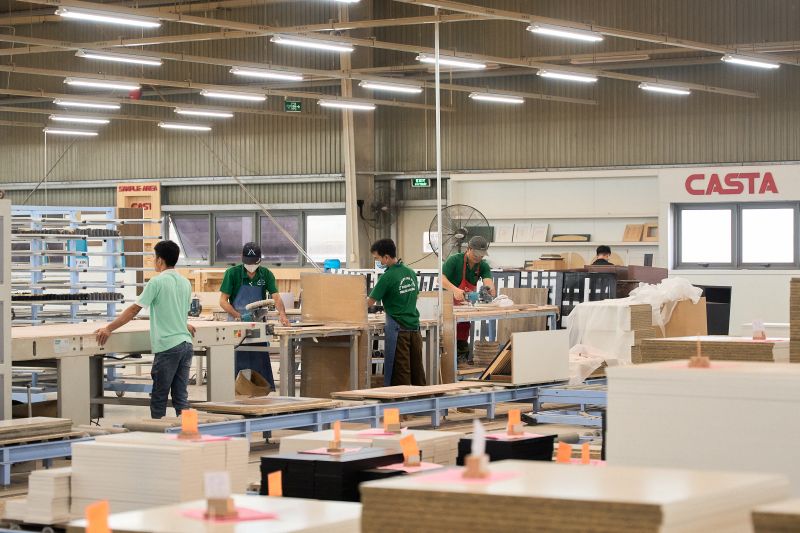
8. Emerging Trends in Packaging Testing for the Furniture Industry
As sustainability becomes a growing concern, more companies are exploring eco-friendly packaging materials that still meet ISTA standards. This shift aligns with consumer demand for environmentally responsible brands.
8.1 Smart Packaging Technologies
Some companies are integrating smart sensors into their packaging to track the condition of the product throughout its journey. These sensors can monitor shocks, temperature, and humidity, providing real-time data to ensure products are safe.
8.2 Sustainable Packaging
Biodegradable and recyclable packaging materials are becoming more common in ISTA testing, as companies seek to minimize environmental impact without compromising product safety.
Data-Driven Analysis:
Companies that switch to sustainable packaging see a 12% increase in customer satisfaction, thanks to the reduced environmental impact and commitment to eco-friendly practices.
Conclusion: Why ISTA Testing is Essential for Contractors and Cabinet Brands
ISTA packaging testing is an essential investment for contractors and cabinet brands that want to ensure their products arrive safely and maintain their high-quality standards. By adhering to ISTA standards, companies can reduce the risk of damage, minimize returns, and increase customer satisfaction. ISTA testing serves as a mark of quality and reliability, protecting a brand’s reputation and ensuring safe delivery.
Contractors and cabinet brands should consider integrating ISTA-compliant packaging into their processes to safeguard their products during transit and ensure a seamless experience for their customers.
FAQ
What is ISTA packaging testing?
What types of products require ISTA testing?
What packaging materials pass ISTA standards?
Why should I adopt ISTA standards for my products?
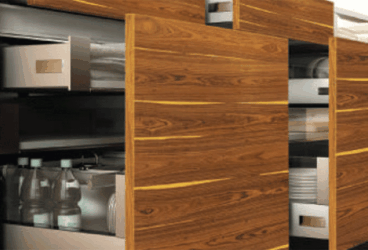
MDF vs Plywood for Kitchen Cabinets – Which is Better?...
MDF vs Plywood for kitchen cabinets is one of the most important decisions contractors and furniture brands must make wh...
11/14/2025 | David Nguyen

Plywood Kitchen Cabinets: Pros and Cons Explained for Contra...
Plywood kitchen cabinets are now one of the most preferred options in modern kitchen manufacturing, combining durability...
11/12/2025 | David Nguyen

Best Italian Kitchen Cabinets: Modern Design, Precision Craf...
Italian kitchen cabinets represent the gold standard in modern kitchen design — celebrated for their craftsmanship, slee...
10/29/2025 | David Nguyen

European vs American Kitchen Cabinets: Key Differences &...
European vs American kitchen cabinets is a core decision for anyone specifying cabinetry for modern buildings or homes. ...
10/27/2025 | David Nguyen
Contact us
Casta is always ready to listen and answer all customers' questions
